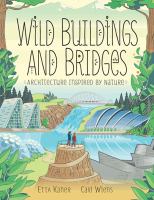
館長分享
Nature is an infinite source of ideas in design while man-made structures are often inspired by nature. Apart from the outlook of the buildings and bridges that are designed to be in harmony of nature, the book “Wild Buildings and Bridges” also looks into the science behind how nature is doing things and how design challenges are resolved.
Beetle living in the Namib Desert, cooling feature of leaves, canyons and cactuses in the desert, roots of vetiver grass, Venus’s flower-basket sponge, termite towers as tall as three-storey building and other creations of the nature, they are all illustrated nicely to present the incredible design ideas together with informative text, photos and graphics of buildings and bridges.
The award-winning writer, as a retired teacher, wrote the content in a way that leads upper primary students to read on their own. Several hands-on activities are available in different parts of the book, as an enjoyable read for STEAM education for sure. This book introduces the nature’s influence to architecture, combines art and science in an interesting perspective and encourages children to look at their surroundings, both the nature and built environment, differently.
Beetle living in the Namib Desert, cooling feature of leaves, canyons and cactuses in the desert, roots of vetiver grass, Venus’s flower-basket sponge, termite towers as tall as three-storey building and other creations of the nature, they are all illustrated nicely to present the incredible design ideas together with informative text, photos and graphics of buildings and bridges.
The award-winning writer, as a retired teacher, wrote the content in a way that leads upper primary students to read on their own. Several hands-on activities are available in different parts of the book, as an enjoyable read for STEAM education for sure. This book introduces the nature’s influence to architecture, combines art and science in an interesting perspective and encourages children to look at their surroundings, both the nature and built environment, differently.

